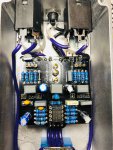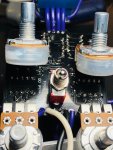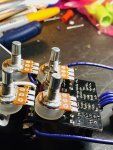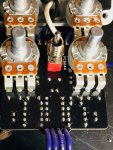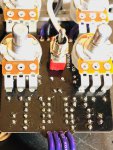soothsayer86
Member
I built a couple Special Overdrives and both are having the same issue. The overdrive itself is extremely sputtery and fizzy sounding and not smooth at all. I have realized I got BC548B versions of the transistors and the circuit calls for BC548C transistors... ugh. I am wondering if this mistake could be causing the issues with the pedals. I have everything socketed and have tried swapping transistors and IC's and it stays the same.
Also, if this is indeed the issue, if someone could point me to the correct transistors at mouser that would be awesome because there are a few different varieties and I am still learning which parts can be swapped and which can't. Thanks in advance.
Also, if this is indeed the issue, if someone could point me to the correct transistors at mouser that would be awesome because there are a few different varieties and I am still learning which parts can be swapped and which can't. Thanks in advance.

